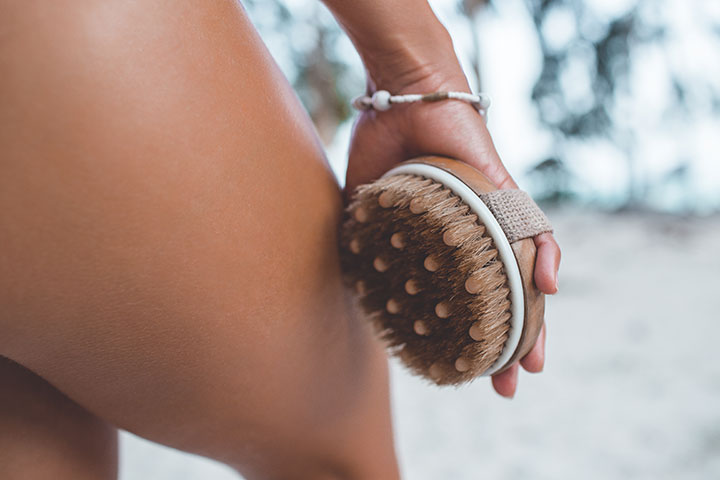All of us want glowing, healthy skin. With a proper exfoliating routine for your face and body, you will be able to eliminate the dead skin cells safely and effectively for a glowing complexion. Exfoliation is when dead skin cells are removed from the surface of your skin. It can improve the health and appearance of your skin. Learning to exfoliate can expose a beautiful, glowing layer of your skin. Read on to find out how to exfoliate, which body parts are okay to exfoliate and more!
How to Exfoliate
Since exfoliation is generally an abrasive process, be gentle when exfoliating your skin. If you are using a scrub, use your finger to apply it in small circular motions. If you prefer using a brush, apply it with short, light strokes around your face or body. Wash off with lukewarm water after exfoliating for about 30 seconds. To avoid further injury, it is best to avoid exfoliating if your skin has cuts, open wounds, or is sunburnt. After exfoliating, use a moisturizer with sun protection.
Which Body Parts Should You Exfoliate?
Aside from your face, you should exfoliate the following body parts:
- Feet
- Heels
- Ankle
- Thighs
- Buttocks
By exfoliating these body parts, you’re improving the look of the skin but you’re also helping to stimulate circulation around these areas. This can be useful for those with cellulite issues around their thighs and buttocks.
How Often Should You Exfoliate?
The frequency that you should exfoliate depends on your skin and whether you’re using physical or chemical exfoliants. For example, individuals with oily skin can exfoliate more than those with sensitive skin. Furthermore, if you’re using a more aggressive exfoliating method (ie. physical exfoliants) you should carry out this method of exfoliation fewer times in a week.
Which Exfoliants Should You Use?
There are two types of exfoliants – physical and chemical exfoliants. Physical exfoliants that you can use include washcloths, loofahs, sponges, brushes, skin scrubs and dermaplaning. Meanwhile, chemical exfoliants reacts with dead skin surface and removes them more effectively. If you are looking for gentle exfoliant for your facial skin, our award-winning exfoliator contains enzymes, such as extracts from different soothing ingredients (Aloe Leaf, Gingko Leaf, Rosemary Leaf). This is gentle enough to use on other parts of your body as well if you have sensitive skin.
What Should You Consider Before Exfoliation?
Determine your skin type before you start exfoliating. This is because different skin types react differently to exfoliation. Here is a short guide to the different skin types.
- Sensitive skin: this skin type is more prone to burns or appears red after using some skincare products
- Normal skin: this skin type is clear and not sensitive to various skin products
- Dry skin: this skin type appears itchy and flaky
- Oily skin: this skin type is normally greasy or appears shiny
- Combination skin: this is a combination of dry and oily skin


